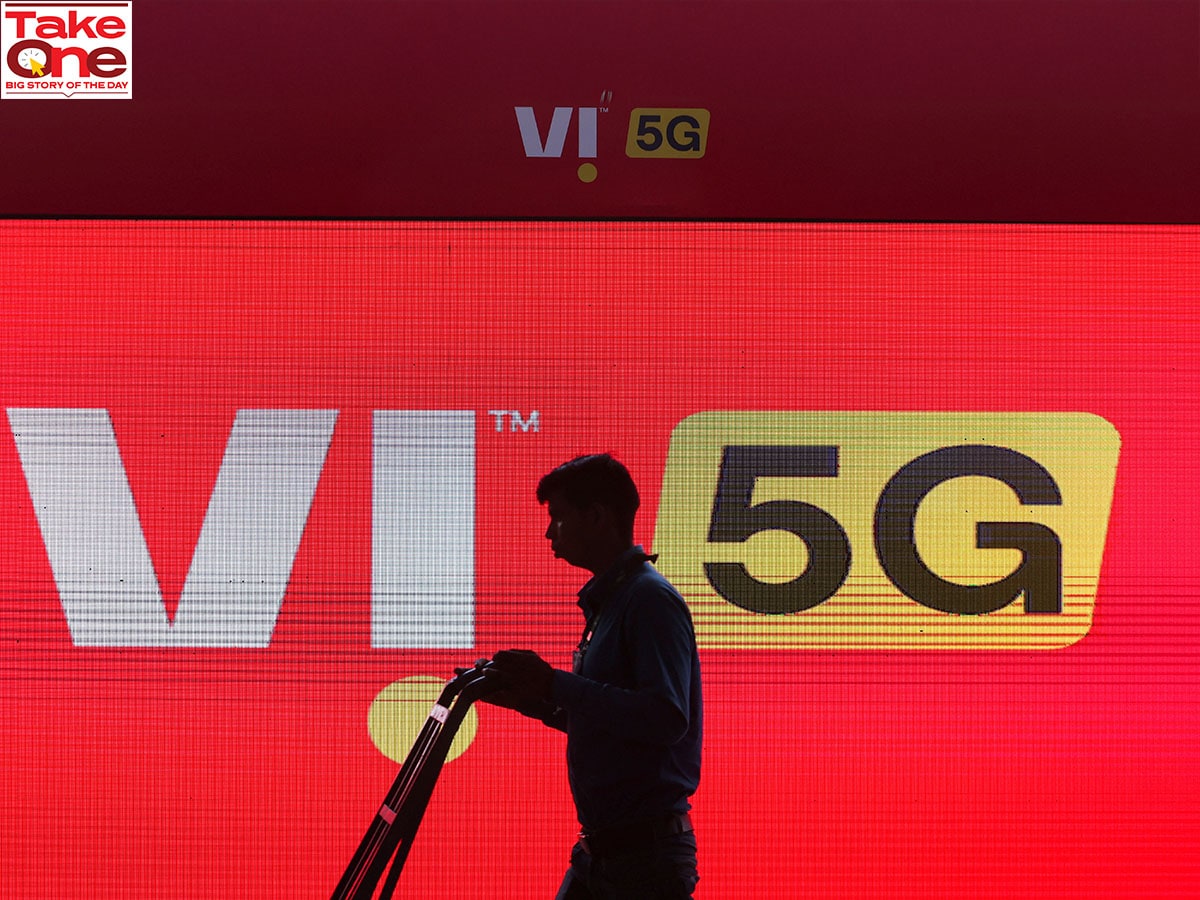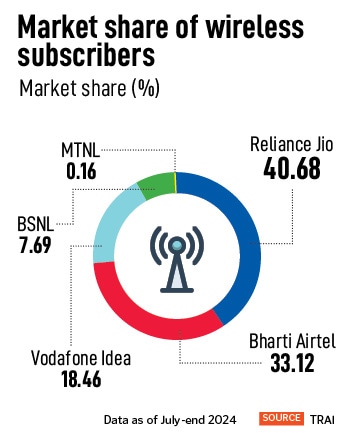
Vodafone Idea: Still several moving pieces
A recent adverse court decision relating to adjusted gross revenue dues makes debt fund raising even more critical for Vi to meet its capex for 4G/5G technology expansion. It will need to continue to hike tariff rates and a benevolent government along the way
 Vi needs to continue to raise significant capital to fund its capital expenditure towards expanding 4G coverage, augmenting capacity, rolling out 5G and enhancing enterprise capabilities.
Image: Reuters/Anushree Fadnavis
Vi needs to continue to raise significant capital to fund its capital expenditure towards expanding 4G coverage, augmenting capacity, rolling out 5G and enhancing enterprise capabilities.
Image: Reuters/Anushree Fadnavis
Capital-starved Vodafone Idea (Vi) will continue to face uncertain times ahead, according to analysts, until it completes a proposed Rs35,000 crore debt fund raising plan in the next two months, as proposed by its top management. On September 22, Vi announced a $3.6 billion (Rs30,000 crore) deal with Nokia, Ericsson and Samsung for supply of network equipment over three years.
This comes five months after Vi had raised Rs18,000 crore through a follow-on public offer (FPO alongside issuing preferential shares to its promoters. After this fund raise, Vi’s cash on books is positive at Rs18,150 crore as of Q1FY25. But the positive news does not really push the needle too far for Vi’s financial security and competitive efficiency.
Catch-up Game
Vi needs to continue to raise significant capital to fund its capital expenditure towards expanding 4G coverage, augmenting capacity, rolling out 5G and enhancing enterprise capabilities. Its larger rivals Reliance Jio and Bharti Airtel have continued to expand their 5G technology network across India.
The worrisome part is that even as Vi will work towards boosting its capex, it will still run short of what Jio and Airtel have in place, which indicates a catch-up game and continuing loss of market share. Also, data shows that Vi has been losing market share and active subscribers even in its priority circles of Kerala, Mumbai, Gujarat, Kolkata and Haryana.
Vi, alongside Airtel, had pinned hopes on a possible relief of up to 50 percent reduction in total adjusted gross revenue (AGR) due to the government. Vi’s estimated liabilities include Rs1,33,110 crore in deferred spectrum payments and Rs70,320 crore in AGR dues.





 Vi’s balance sheet is expected to remain stretched [even after the potential conversion of government dues into equity]. The Goldman Sachs analysts have concluded that with its current valuations at a premium to peers such as Airtel, the Vi stock is on a sell-rating; on a discounted cash flow basis, the 12-month target is Rs2.5.
Vi’s balance sheet is expected to remain stretched [even after the potential conversion of government dues into equity]. The Goldman Sachs analysts have concluded that with its current valuations at a premium to peers such as Airtel, the Vi stock is on a sell-rating; on a discounted cash flow basis, the 12-month target is Rs2.5.













